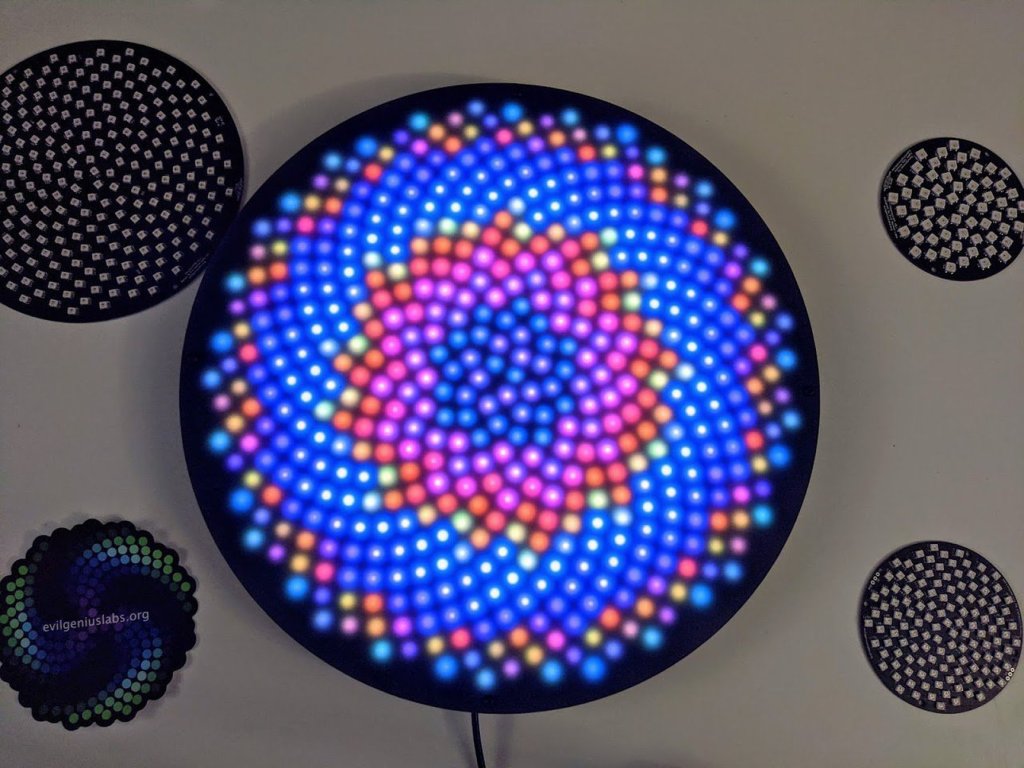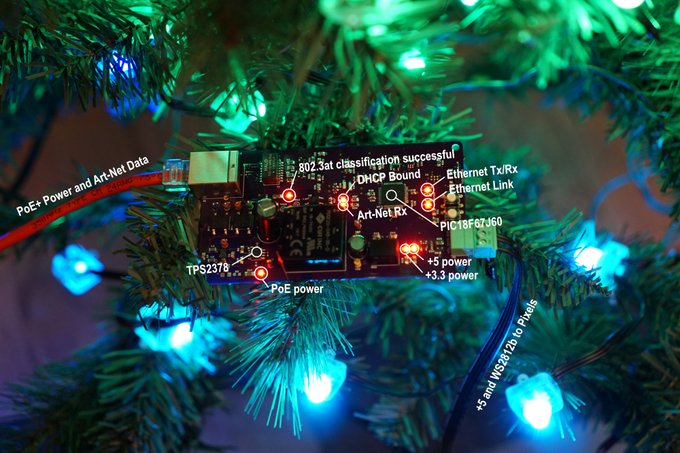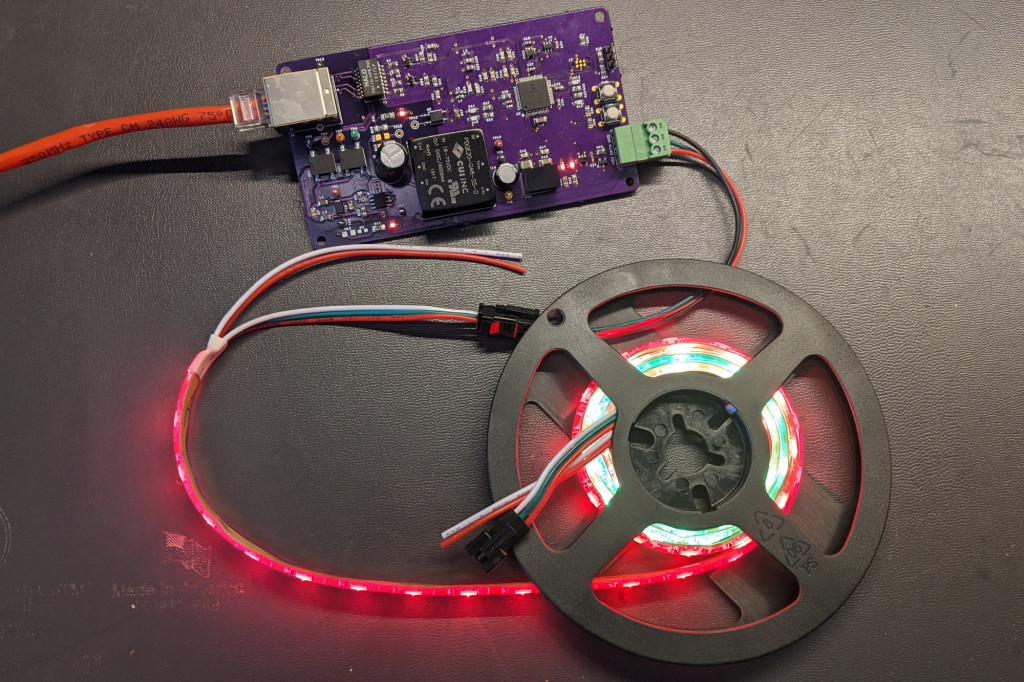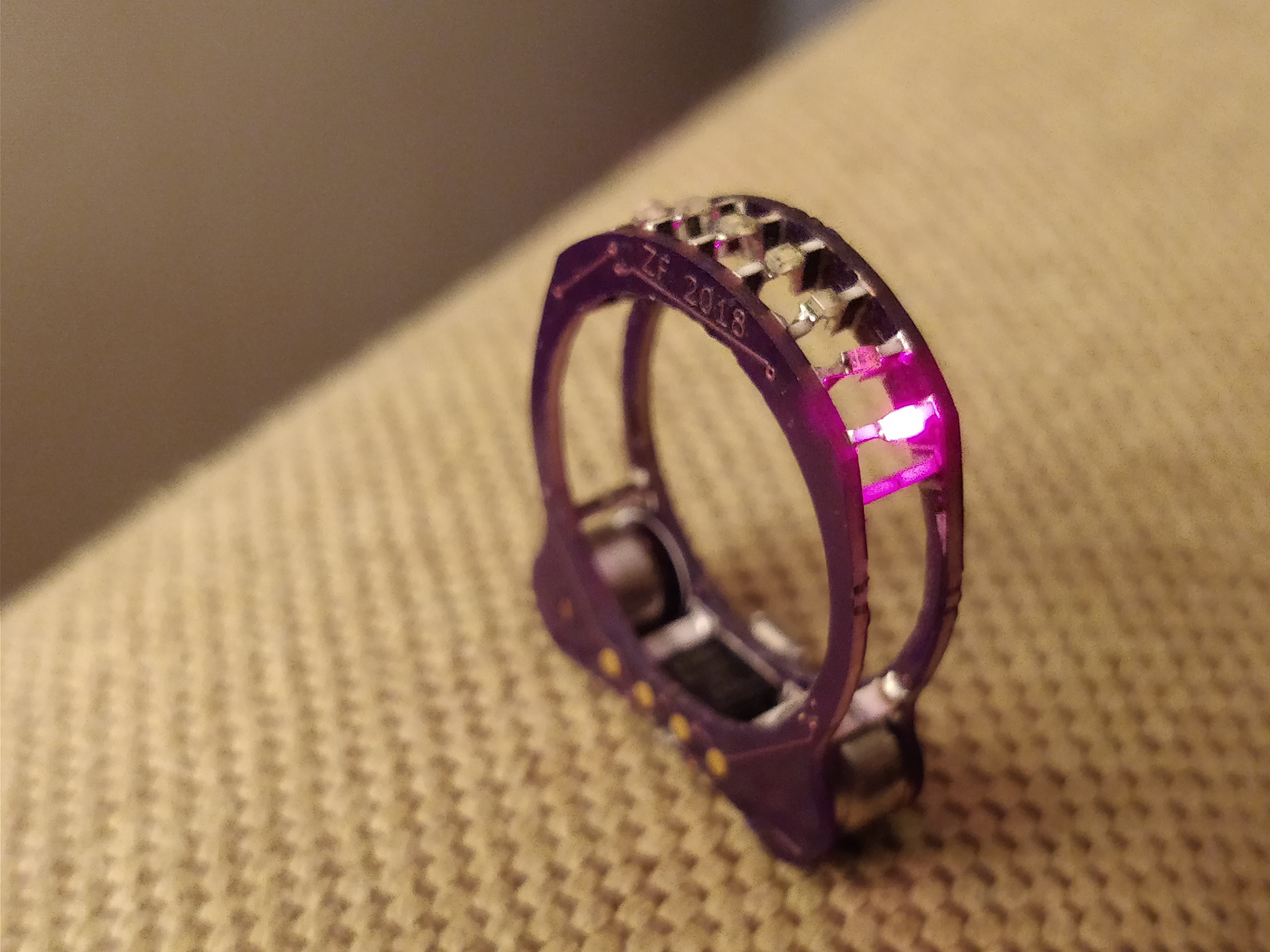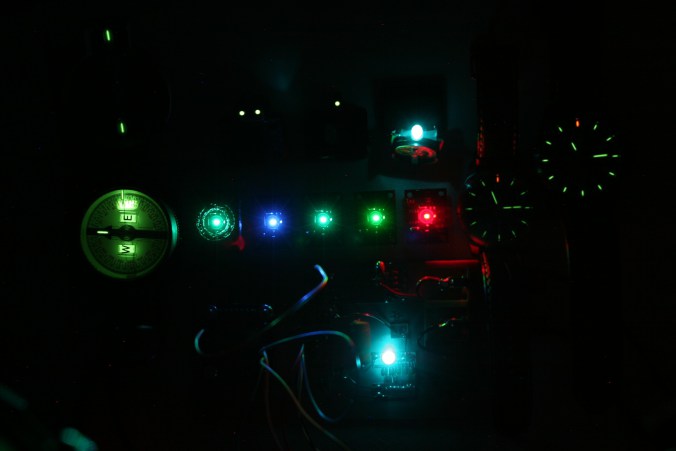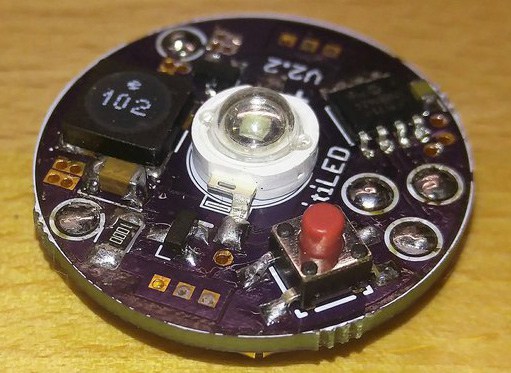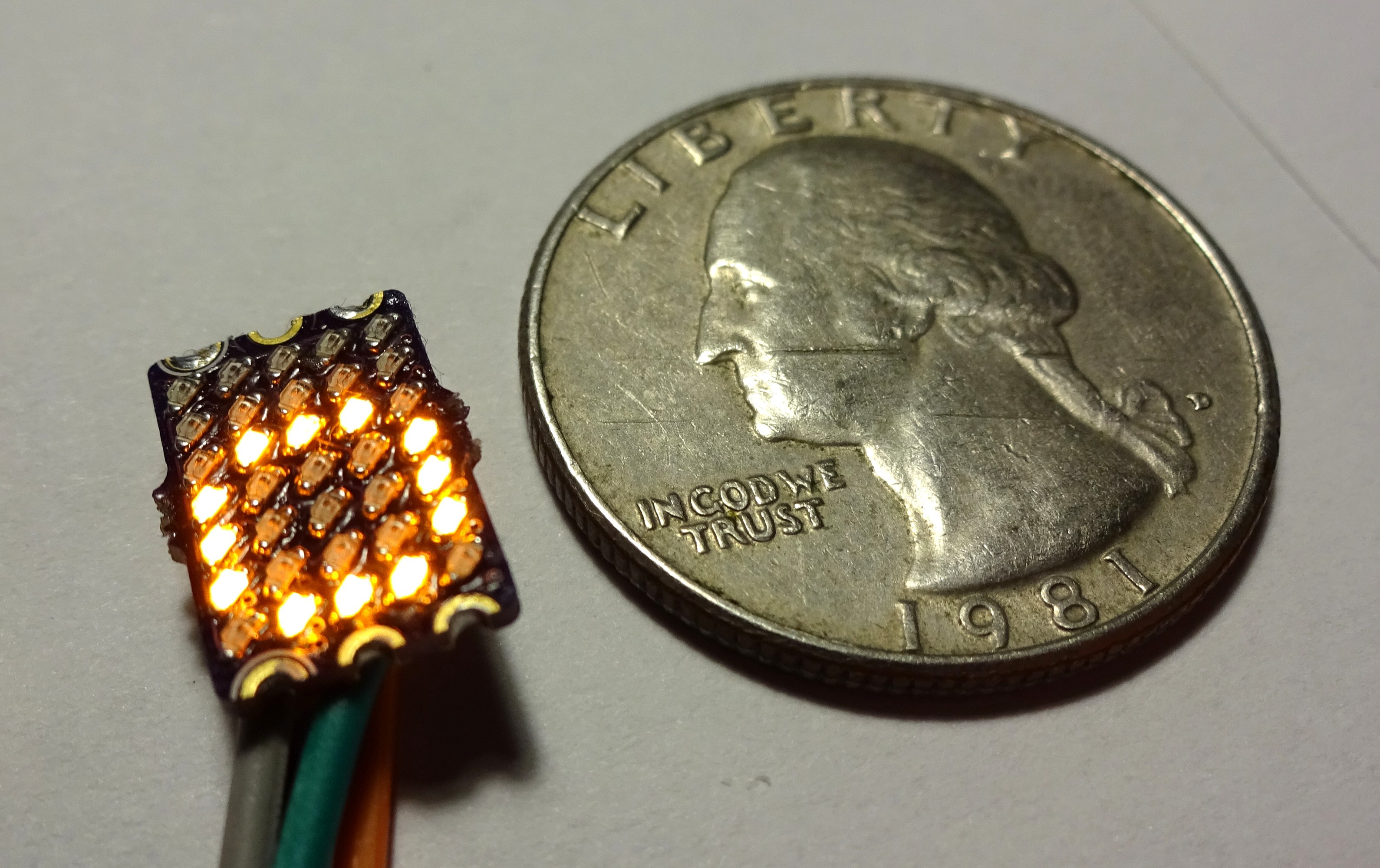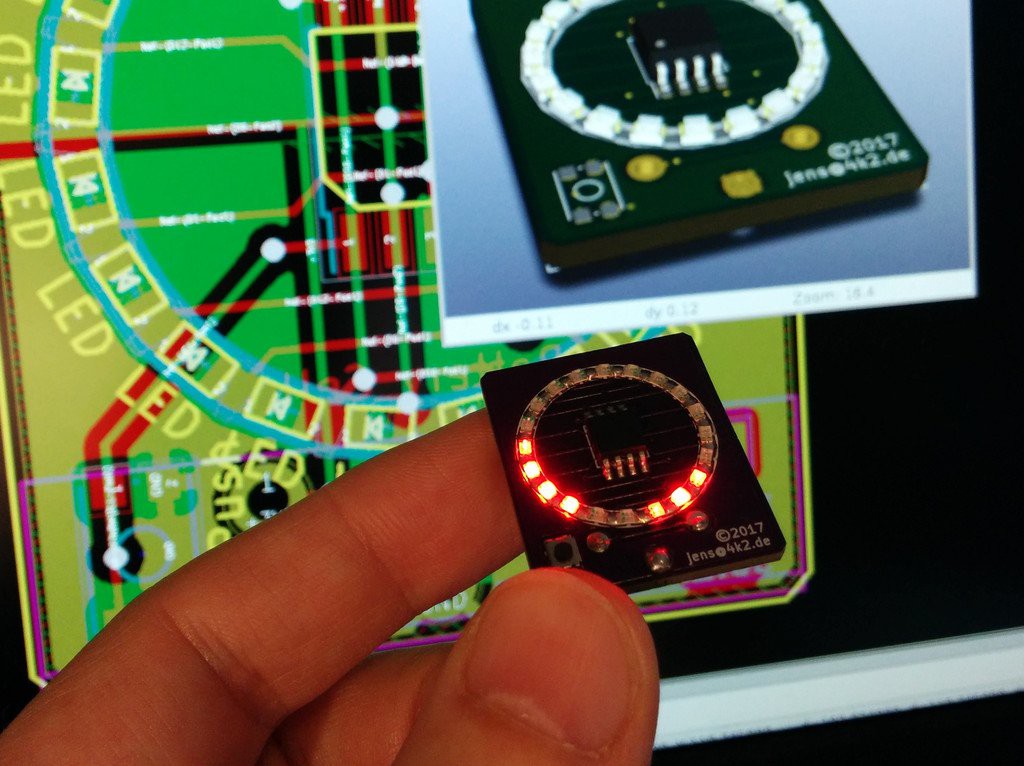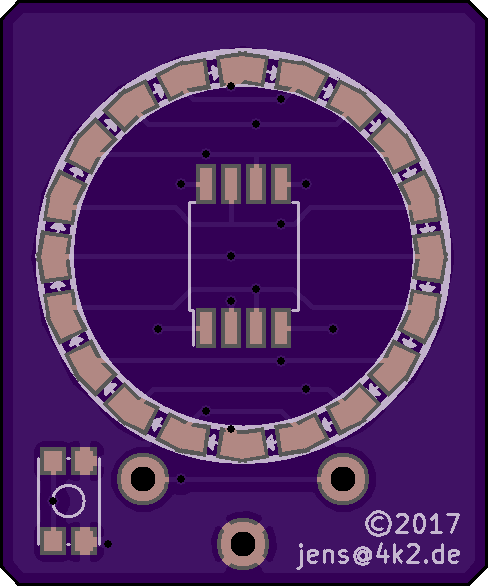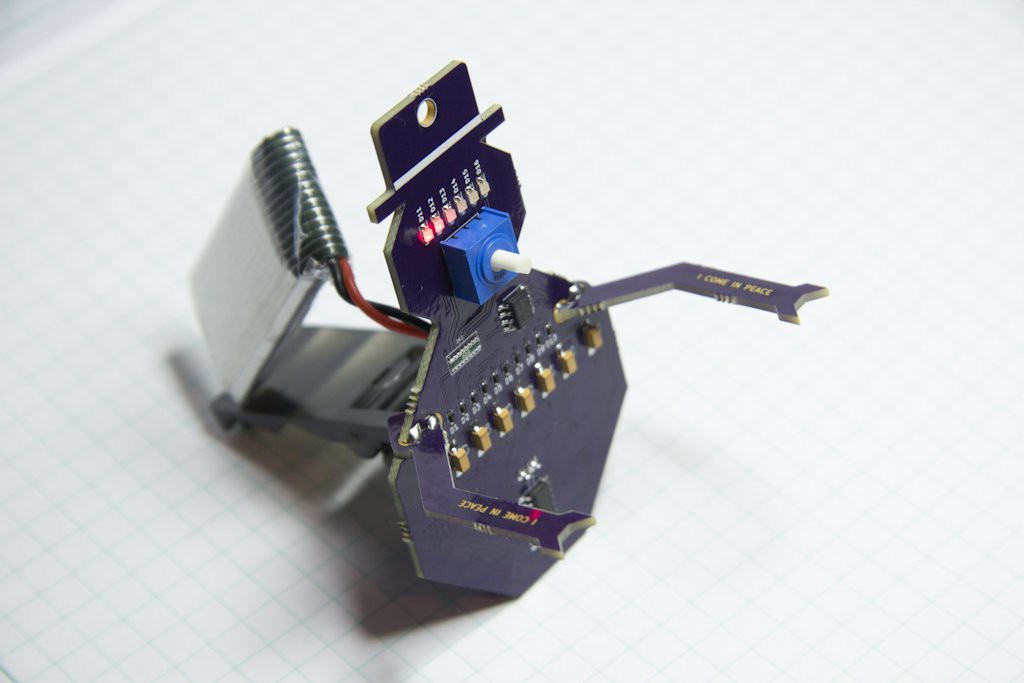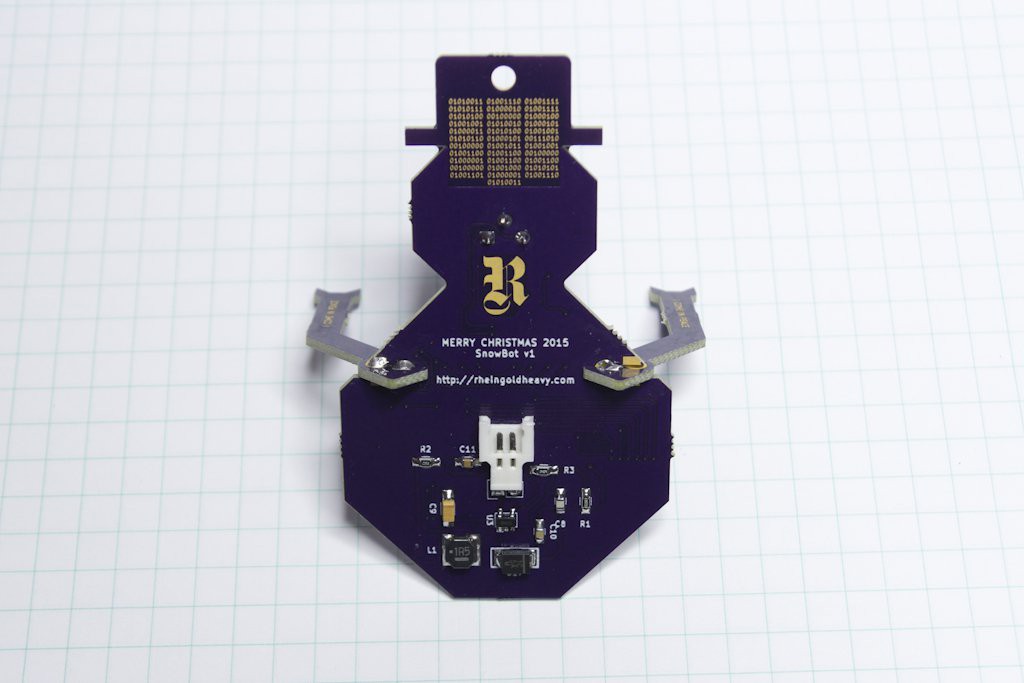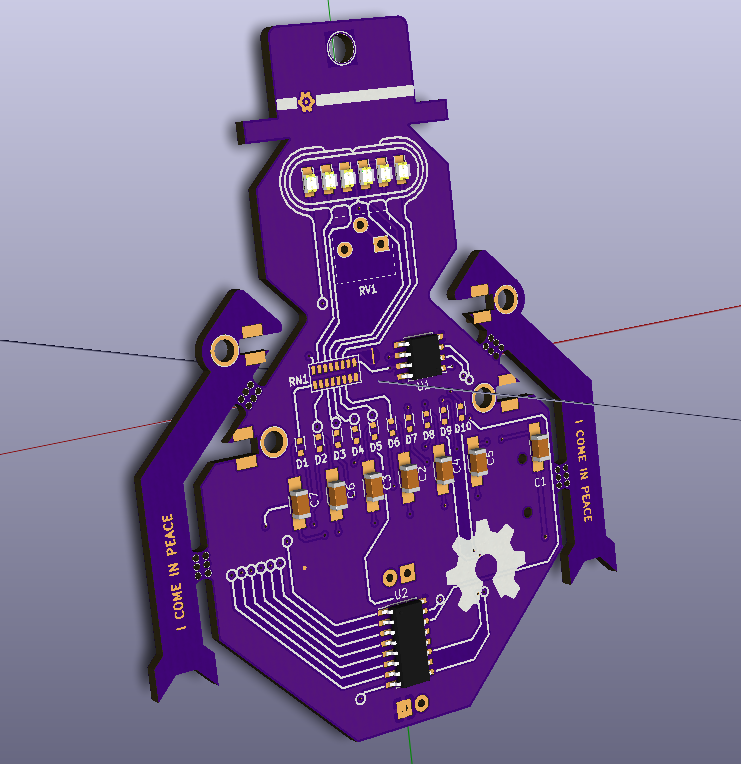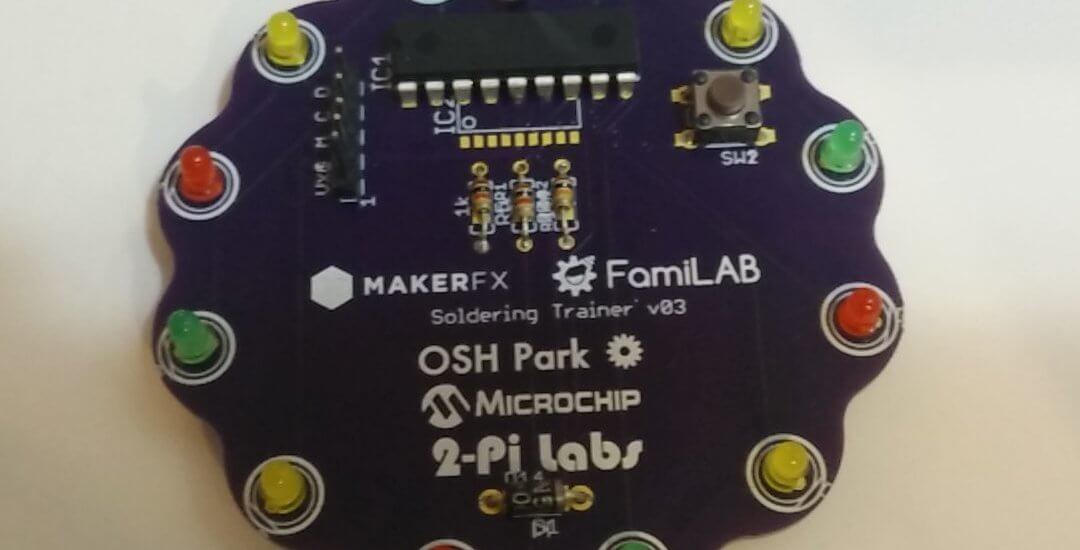This new creation from Jason Coon packs 64 RGB LEDs on a 20 mm disc in a Fibonacci distribution:

I have created several LED art pieces in Fibonacci patterns. They are all very labor intensive to create, and so are fairly expensive and limited in quantity. I wanted to come up with a Fibonacci layout that was at least slightly easier to create, and therefore more affordable.
I have RGB LEDs in just about every form they come: strips, strings, rings, discs, etc. The LEDs on most discs are arranged in very regular rings. Fibonacci64 is different. The LEDs are arranged in a Fibonacci distribution. The makes the layout very organic and seemingly messy. But with the proper animation, spiral patterns emerge with spectacular results.
The WS2812C-2020 each only consume a maximum of 5mA, and that’s at 100% brightness, solid white color. That’s only 320 mA for all 64 combined. They are still very bright, and I usually only run them at about 25% brightness. They’re perfect for wearables, powered with LiPo batteries.
Read more…
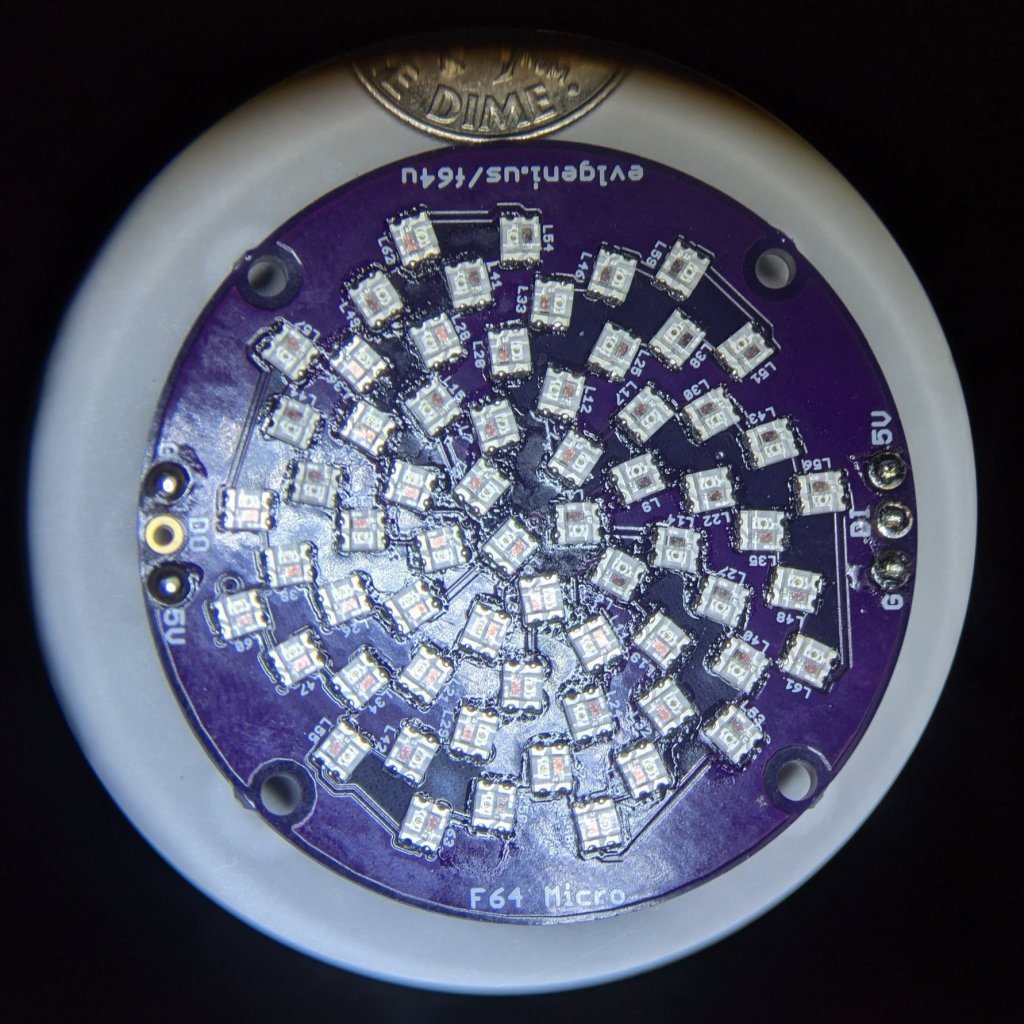
Here is it in action:

